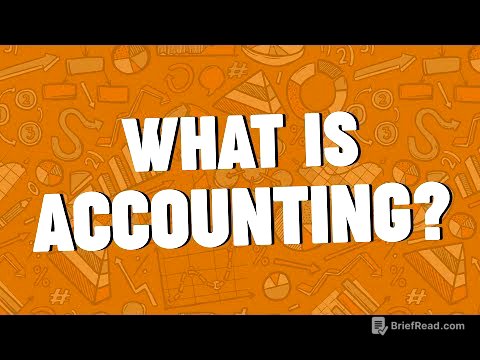TLDR;
This video by Sunil Panda explains the role and functions of a central bank, focusing on the Reserve Bank of India (RBI). It details its functions such as currency issuance, acting as the government's bank, supervising commercial banks, managing foreign exchange reserves, and controlling credit through monetary policy to manage inflation and deflation.
- Central banks regulate banking systems and act as apex banks.
- RBI's functions include issuing currency, serving as the government's bank, and supervising commercial banks.
- Monetary policy is used to control credit and manage inflation and deflation.
Introduction to Central Banks [0:00]
The video introduces the concept of a central bank as the regulator of a country's banking system, using the Reserve Bank of India (RBI) as the primary example. The central bank is described as the apex bank that controls the entire banking system of a country. RBI was established on April 1, 1935, following the RBI Act of 1934. The video outlines the various functions of the central bank, including regulating commercial banks, assisting the government, providing loans, settling government transactions, issuing advisories, and supervising banks.
Issuing Authority of Currency Notes [2:00]
The central bank has the exclusive right to print currency notes, making it the sole agency for issuing legal tender. Legal tender is money that cannot be refused in transactions. However, one rupee coins and notes are issued by the Ministry of Finance, which is part of the Government of India. The power to print all other currency notes lies with the Reserve Bank of India.
Banker to the Government [3:27]
The central bank acts as the banker, agent, and financial advisor to the government, managing government accounts and providing financial assistance. It buys and sells securities on behalf of the government and advises on monetary and financial matters. The RBI also provides loans to the government, especially during budget deficits, through a process called deficit financing, where new currency is printed to support government spending.
Banker's Bank and Supervisory Role [5:27]
The central bank serves as the bank for commercial banks, holding their accounts, providing loans, and accepting deposits. It also supervises commercial banks to ensure they follow regulations and ethical practices. The rate at which the central bank lends money to commercial banks is known as the repo rate or bank rate, while the rate at which commercial banks park surplus funds with the RBI is the reverse repo rate. The RBI conducts inspections, issues licenses, and can impose penalties on commercial banks that do not comply with regulations, such as maintaining CRR (Cash Reserve Ratio) and SLR (Statutory Liquidity Ratio).
Lender of Last Resort [8:39]
In times of financial crisis, commercial banks turn to the central bank as the lender of last resort. This is crucial because commercial banks often have fewer cash reserves than their liabilities, and they rely on the central bank for assistance during emergencies to meet their obligations.
Custodian of Foreign Exchange Reserve [9:57]
The central bank is the custodian of the nation's foreign exchange reserves, managing and maintaining reserves of foreign currencies. It manages floating exchange rates and handles transactions related to imports and exports, ensuring that foreign currency payments are processed through the RBI.
Clearing House Function [10:55]
The central bank acts as a clearing house for settling transactions and claims between commercial banks. This function facilitates the transfer of funds between banks and ensures the settlement of mutual claims, with the RBI managing the reserves and overseeing the fund transfers.
Control of Credit [12:13]
The central bank controls credit through monetary policy to manage inflation and deflation. During inflation, the RBI restricts the money supply to reduce demand, while during deflation, it liberalizes the money supply to encourage demand. This control is crucial for maintaining economic stability, as both high inflation and deflation can lead to economic problems. The central bank's monetary policy aims to regulate credit creation by commercial banks to stabilize the economy.









